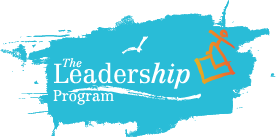I spent a large part of my professional time providing personal and professional development trainings for both staff at The Leadership Program and for individuals and organizations across the country. And while I certainly am not “perfect” at it (who ever is, at anything really?), I have learned a thing or two along the way that help me keep things lively—both for the participants and for me. I’m still learning, of course, but here are a few training best practices I try to keep in mind no matter who my audience is.
- Make it Different. Every Time.
If you are like me, you probably have a handful of topics that are squarely in your wheelhouse—topics that you are asked to facilitate repeatedly. It can be tempting, then, to create your agenda and then just facilitate that agenda over… and over…. and over again. Resist that urge! You know why? Every audience is different, so you need to compare your agenda against each audience and make necessary tweaks to speak to them specifically. Also, with each facilitation you’ll likely discover some activities or sections that work better than others, and so you should be in a constant state of fine-tuning. Making even subtle changes to your agenda also helps keep the content area fresh for you, which automatically makes you better as a facilitator. Otherwise you’ll end up a “calling it in” facilitator. Your participants know when you’re recycling old material, and if you’re just recycling old material you’re telling your participants that you actually don’t really care about them at all. Not cool, Calling It In Facilitator. Not cool. Don’t be that guy.
- Enough With The PowerPoint Already.
PowerPoints and other tech presentation are fine, and most participants have come to expect them. But they can become a dangerous trap. We’ve talked about this before, but how many presentations have you attended where the facilitator ended up just essentially reading what they had written on their PowerPoint, trapped behind the podium? No fun for anyone. We can read, people. If you use a PowerPoint or other tech presentation, use it to enhance what you’re sharing with us, don’t make it be what you’re sharing with us. Because you know what you should be sharing the most of? YOU! Give yourself to your participants—your energy, your attention, your eye contact, your stories, your expertise. People engage with people first, and content second. Don’t put yourself second.
- Grown Ups Don’t Like to Be Told What To Do.
Are you facilitating in a room with 60 seats, and your 20 participants decide to all sit in the back three rows? Don’t make them move to the front. Don’t.Do.It. They will hate you immediately and forever. Grown-ups do not like to be told what to do, so don’t make them. Don’t make them move to the front. Don’t point out the person that isn’t following the directions you’ve just given and force them to join in. Don’t call a participant out for not actively participating. The best you can do is “invite” them—invite them to share, invite them to participate, invite them to stay. If they don’t, don’t take it personally: it rarely has anything to do with you (and if it does have everything to do with you, well, there’s nothing you can really do about that anyway, so let ‘em go, man. Let ‘em go).
- Offer Resources.
We love stuff! Ever seen the line at the booth at the festival that’s giving away free water bottles if you sign up to receive information about the new bank in town? That line is around the corner. Because who can turn down a free water bottle? That same part of human nature that craves a free thing, no matter what the free thing is, lives in your participants, too. Participants want to walk away with something tangible, and something they can utilize immediately. Whether it be a worksheet, a brochure, a link to a video, a list of quotes, a coloring book, or a pencil: Give Them Something, Already. They’ll leave “hungry” if you don’t.
- Be Yourself.
If you are not a “suit,” don’t try to be a suit. There is no such thing as the “right” kind of way to be a professional. What’s your personal style? What’s your “thing”? Humor? Historical facts? Music? Props? Typed up agendas? Rounds or theatre style seating? A microphone? Figure out what moves you, because if you’re authentic in that then you are much, much more likely to engage your audience than if you are trying to play a part. Just do you. Forget about what the guy in the next room is doing. What are you doing?
What else would you add? Share with us in the comments below so we can celebrate your success!


Comments [0]
Click here to read/write comments